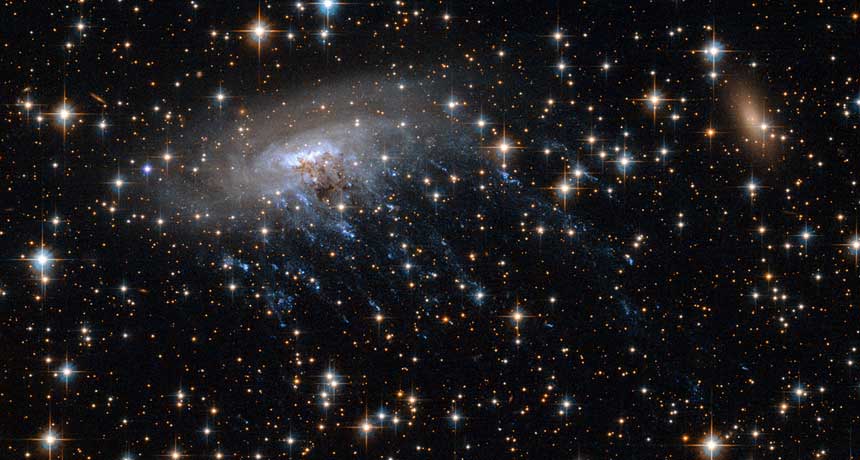Stars is the pride of night sky, and are more than celestial objects for humans. They are superior transformations of billions of years. The star's life cycle from birth is a unique process in the universe.By exploring the intricate stages of stars' lives, we learn about the cosmos world and see our curious universe. We experience the fascinating journey of the cosmos and stars. Uncovering their evolution from initial formation to their last destination. Whether your dream is an astronomer or just curious mind, this exploration provides a basic understanding of stars and how stars are made in-universe
1. Stellar Nursery: The Birth of Stars
Stars are born in massive clouds of gas and dust known as Nubela. These nebulae is vast region in space where matter are packed. within these steller nurseries, regions of high density start to collapse under their own gravity, starting the process of star formation. As gas dust gathers they dense core is known as a protostar.
The Formation Process:
Nebulae: The process begins in a nebule, where the density of gas and dust creates a region of higher mass. These regions start to contract under the influence of gravity, leading to the formation of protostars.
Protostars: As the core of collapsing clouds becomes increasingly dense, temperatures high up and the protostar begins to shine slowly. This crucial phase where the protostar gathers more matter from surroundings
Nuclear Fusion: Once core temperature reaches exact points of several million degrees, nuclear fusion fire up, and hydrogen atoms fuse to helium, releasing vast amount of enery. this mar transitions of from prostar to main sequence star
Key Points
- Nebulae crucial to cosmic cradle where stars are born.
-protostars represents the early stage of Steller development before achieving stable fusion process.
The onset of nuclear fusion used in beginning of star's main sequence phase, where it will spend most of its life
2. Main Sequence: The Steller Longevity
The main sequence is longest phase in star's life cycle, known as stable fusion of hydrogen into helium in star's core, During this period, stars maintain a balance between gravitational force inside and pressure from nuclear fusion from pushing from outside.
Characteristics of Main-Sequence Stars
Hydrogen Fusion: In the main sequence phase stars continuously fuse hydrogen into helium, generating energy that points to light and heat. This process stable stars and bright.
Mass and Lifespan:The duration of main sequence depends on the star mass. smaller stars like our sun remain this phase for billions of years, while more massive stars burn out more quickly.
Steller Classification:stars classified into different categories based on their temperature and luminosity. these include o. b. a. f, s, k and types, with o-types stars being the hottest and M-type stars being coolest
Key Points
The main sequence phase is where stars spend majority of their lives, engaging in stable hydrogen fusion.
The lifespan of star on main sequences is influenced by its mass, with more massive stars
Steller classification helps astronomers understand various types of characteristics
3.Post-Main Sequence: The Transition Period
As a star exhausts its hydrogen fuel, it undergoes significant changes. The core, now primarily composed of helium, contracts and heats up, while the outer layers expand and cool. This phase can vary significantly depending on the star's mass.
Stages in the Post-Main Sequence Phase
Red Giants: For stars similar to the Sun, the next phase is the red giant stage. The star expands and cools, turning red and becoming much larger than it was during the main sequence. Helium fusion begins in the core, creating heavier elements.
Supergiants:More massive stars evolve into supergiants These stars become even larger and more luminous, with a core undergoing complex fusion processes that produce elements up to iron.
Planetary Nebulae:In the final stages of the red giant phase, the outer layers of the star are ejected, forming a planetary nebula The remaining core becomes a white dwarf.
4. Stellar Remnants
he ultimate fate of a star depends largely on its mass. After the post-main sequence phase, stars conclude their life cycles in one of several ways.
Final Stages Based on Stellar Mass:
White Dwarfs:tars with masses similar to or less than the Sun shed their outer layers, leaving behind a dense, hot core known as a white dwarf Over time, the white dwarf cools and dims, eventually becoming a cold, dark object.
Neutron Stars:More massive stars undergo a supernova explosion at the end of their lives. The core remaining after the explosion can collapse into a neutron star, an incredibly dense object composed almost entirely of neutrons.
Black Holes:The most massive stars end their lives in a supernova explosion, leaving behind a A black hole is a region of space where the gravitational pull is so strong that not even light can escape.
Key Points
- White dwarfs are the remnants of stars that have shed their outer layers and cooled over time.
- Neutron stars and black holes represent the final stages for the most massive stars, with neutron stars being extremely dense and black holes having intense gravitational fields.
- Supernovae play a crucial role in dispersing elements into space, enriching the cosmos with new materials.
The life cycle of stars is a profound journey that illustrates the dynamic nature of the universe. From their birth in nebulae to their final stages as white dwarfs, neutron stars, or black holes, stars influence the cosmos in remarkable ways. Understanding their evolution not only enhances our knowledge of celestial phenomena but also underscores the interconnectedness of all cosmic processes. As we continue to explore the universe, the study of stars will remain a crucial part of unraveling the mysteries of the cosmos and our place within it.

